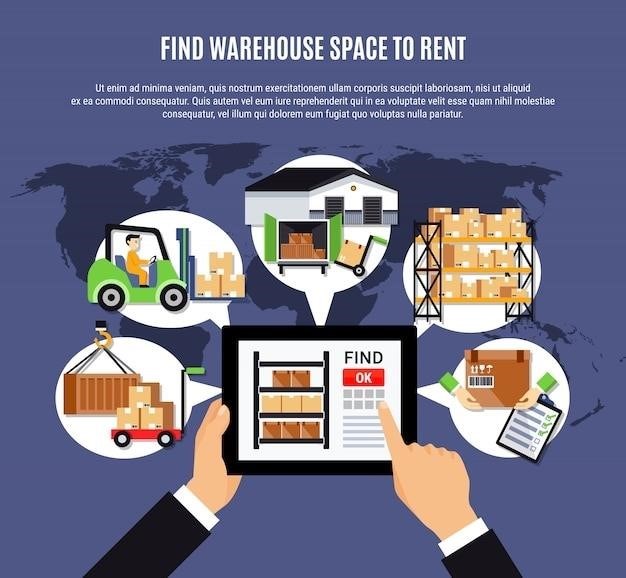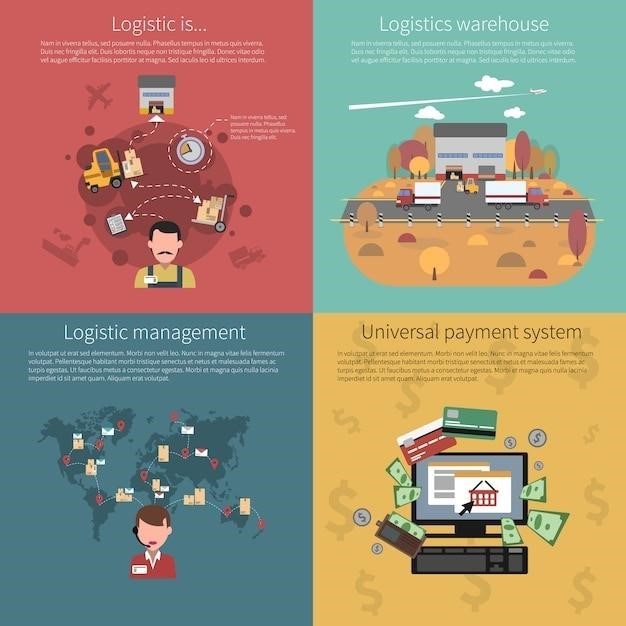Supply Chain Management Operations Management
Supply chain management (SCM) is a critical aspect of modern business operations, encompassing the coordination of all activities involved in the procurement, production, and delivery of goods and services to end customers. It involves managing a network of organizations and activities that transform raw materials into finished products and deliver them to customers.
Introduction
Supply chain management (SCM) and operations management (OM) are interconnected disciplines that play a crucial role in the success of businesses across industries. SCM focuses on the orchestration of a network of organizations and activities that transform raw materials into finished products and deliver them to customers. It encompasses various aspects, including sourcing, procurement, production, inventory management, warehousing, transportation, and distribution. On the other hand, OM deals with the design, planning, and control of the processes that create goods and services. It involves managing resources, optimizing production processes, ensuring quality, and meeting customer demands.
The integration of SCM and OM is essential for businesses to achieve operational efficiency, cost reduction, and customer satisfaction. A well-managed supply chain can enhance responsiveness to market demands, reduce lead times, minimize inventory costs, and improve overall profitability. Effective operations management, in turn, ensures the smooth flow of goods and services throughout the supply chain, contributing to higher quality, reduced waste, and improved productivity.
This comprehensive guide delves into the intricacies of SCM and OM, exploring key components, best practices, and emerging trends in these crucial areas of business management. It provides insights into the challenges and opportunities presented by the dynamic global business environment and the role of technology in optimizing supply chain operations.
Key Components of Supply Chain Management
A robust supply chain management system is built upon several key components that work in synergy to ensure efficient and effective operations. These components are interconnected and rely on each other to maintain a seamless flow of goods and services from origin to destination. Understanding these key components is essential for businesses to optimize their supply chains and gain a competitive advantage.
One of the most critical components is sourcing, which involves identifying and selecting suppliers who can provide the necessary raw materials, components, or services at the best possible price and quality; The sourcing process requires careful evaluation of potential suppliers based on factors such as cost, reliability, lead times, and sustainability practices.
Another crucial component is procurement, which involves the actual purchasing of goods and services from chosen suppliers. Effective procurement processes ensure that the right materials are obtained at the right time and in the right quantities, while also maintaining cost control and adhering to quality standards.
Production is the core process of transforming raw materials into finished goods. This component involves managing production facilities, optimizing manufacturing processes, and ensuring quality control throughout the production cycle.
Inventory management plays a vital role in balancing supply and demand, ensuring that the right amount of goods are available at the right time, while minimizing storage costs and preventing stockouts.
Warehousing involves managing storage facilities for finished goods and raw materials, ensuring efficient handling, and minimizing damage and spoilage.
Finally, transportation and distribution are responsible for the physical movement of goods from suppliers to production facilities, warehouses, and ultimately to customers. These components require careful planning and coordination to ensure timely and cost-effective delivery.
Operations Management in Supply Chain
Operations management is an integral part of supply chain management, focusing on the efficient and effective transformation of inputs into outputs, ensuring the smooth flow of goods and services within the supply chain. It involves managing the day-to-day activities of production, inventory, warehousing, and transportation, aiming to optimize processes, reduce costs, and enhance customer satisfaction.
A key aspect of operations management in supply chains is process optimization. This involves analyzing and improving existing processes to eliminate waste, minimize bottlenecks, and enhance efficiency.
Capacity planning is another crucial element, ensuring that production facilities and resources are adequately sized to meet current and future demand, while avoiding overcapacity and underutilization.
Quality control plays a vital role in maintaining product standards throughout the supply chain, minimizing defects, and ensuring customer satisfaction.
Inventory management is crucial for balancing supply and demand, minimizing storage costs, and preventing stockouts. Effective inventory management strategies involve determining optimal inventory levels, managing stock turnover, and implementing efficient inventory tracking systems.
Supply chain logistics encompasses the planning, implementation, and control of the flow of goods and services from origin to destination. This includes managing transportation, warehousing, and distribution, ensuring timely and cost-effective delivery of products to customers.
Effective operations management in supply chains requires a holistic approach, considering all aspects of the supply chain and their interconnectedness. By optimizing processes, managing capacity, ensuring quality, and implementing efficient logistics, businesses can achieve greater efficiency, reduce costs, and enhance customer satisfaction.
The Importance of Integration
In the intricate tapestry of supply chain management, integration is not merely a desirable attribute but a fundamental cornerstone for achieving operational excellence. It signifies the seamless coordination and collaboration among all stakeholders within the supply chain, from suppliers and manufacturers to distributors, retailers, and ultimately, the end customer.
A truly integrated supply chain transcends the traditional siloed approach, where each entity operates independently, often leading to inefficiencies and communication breakdowns. Instead, it fosters a collaborative environment where information flows freely, processes are synchronized, and decisions are made collectively.
The benefits of integration are manifold. Enhanced visibility across the entire supply chain allows for real-time tracking of inventory, production, and delivery, enabling better forecasting, planning, and responsiveness. Improved communication fosters greater transparency and trust among partners, leading to more efficient collaboration and problem-solving.
Reduced lead times and expedited deliveries result from optimized processes and coordinated efforts, ultimately improving customer satisfaction. Streamlined operations and reduced duplication of effort contribute to significant cost savings. Enhanced agility enables quick adaptation to changing market demands and unexpected disruptions, ensuring resilience in the face of volatility.
In essence, integration in supply chain management is the catalyst for achieving a more efficient, responsive, and cost-effective system, ultimately driving greater business value and competitive advantage.
Challenges and Opportunities in Supply Chain Management
The dynamic nature of the global marketplace presents both challenges and opportunities for supply chain management. Navigating these complexities requires a strategic approach, a keen understanding of the evolving landscape, and a willingness to embrace innovation.
Among the most pressing challenges are disruptions to supply chains, often triggered by geopolitical instability, natural disasters, or unforeseen events like the COVID-19 pandemic. These disruptions can lead to shortages, delays, and increased costs, demanding agile and resilient strategies to mitigate their impact.
The increasing demand for customization and personalization in products and services presents another challenge. Meeting these diverse requirements necessitates flexible and adaptable supply chains capable of producing a wide range of products and services efficiently.
The growing emphasis on sustainability and ethical sourcing is another key consideration. Supply chains are increasingly scrutinized for their environmental impact, labor practices, and social responsibility. Businesses must demonstrate their commitment to sustainable and ethical operations to maintain consumer trust and brand reputation.
Despite these challenges, the evolving landscape also presents exciting opportunities. Advances in technology, such as artificial intelligence, blockchain, and the Internet of Things (IoT), offer powerful tools for enhancing supply chain visibility, efficiency, and resilience.
The rise of e-commerce and the increasing reliance on digital channels create new opportunities for direct-to-consumer models, faster delivery, and enhanced customer experiences. By embracing innovation and adapting to these trends, businesses can navigate the challenges and capitalize on the opportunities to create more efficient, sustainable, and customer-centric supply chains.
The Role of Technology
Technology plays a transformative role in modern supply chain management, offering a powerful arsenal of tools to enhance visibility, efficiency, and resilience. By embracing these advancements, businesses can streamline operations, optimize resource allocation, and gain a competitive edge in an increasingly complex global marketplace.

Artificial intelligence (AI) is revolutionizing supply chain decision-making. AI-powered algorithms can analyze vast amounts of data to identify patterns, predict demand, optimize inventory levels, and improve forecasting accuracy. This data-driven approach enables proactive decision-making, minimizing disruptions and ensuring timely delivery of goods and services.
Blockchain technology is transforming supply chain transparency and security. By creating an immutable record of transactions across the supply chain, blockchain eliminates the risk of data tampering and fraud, enhancing trust and accountability. This technology is particularly valuable for tracking goods, managing provenance, and ensuring product authenticity.
The Internet of Things (IoT) is connecting physical assets within the supply chain, enabling real-time monitoring and data collection. Sensors embedded in equipment, vehicles, and storage facilities can provide valuable insights into asset performance, location, and environmental conditions. This data-driven approach facilitates proactive maintenance, optimizes logistics, and reduces downtime.
Cloud computing platforms are providing businesses with scalable and cost-effective solutions for managing vast amounts of data and collaborating with partners across the supply chain. Cloud-based solutions enable real-time data sharing, collaboration, and access to advanced analytics tools, enhancing decision-making and driving efficiency.
By leveraging these technological advancements, businesses can transform their supply chains into highly efficient, responsive, and resilient systems that meet the demands of the modern marketplace.
Best Practices for Successful Supply Chain Management
Achieving excellence in supply chain management requires a strategic approach that prioritizes collaboration, efficiency, and responsiveness. By adopting best practices, businesses can optimize their supply chains for enhanced performance, reduced costs, and improved customer satisfaction.
Building strong relationships with suppliers is paramount to a successful supply chain. Open communication, transparency, and shared goals foster trust and collaboration, enabling seamless coordination of operations. Strategic partnerships with reliable suppliers ensure consistent quality, timely delivery, and cost-effective procurement.
Demand forecasting is crucial for accurate planning and inventory management. By leveraging historical data, market trends, and analytical tools, businesses can develop robust demand forecasts that minimize stockouts and overstocking. Accurate forecasting enables efficient resource allocation, reduces waste, and ensures timely delivery of goods and services.
Optimizing logistics and transportation is essential for efficient and cost-effective delivery. By leveraging advanced logistics software, optimizing routes, and exploring alternative transportation modes, businesses can streamline the movement of goods and reduce transportation costs;
Embracing lean manufacturing principles minimizes waste, maximizes efficiency, and enhances overall productivity. By identifying and eliminating non-value-adding activities, businesses can streamline processes, reduce costs, and improve lead times.
By implementing these best practices, businesses can create a robust and resilient supply chain that delivers exceptional value to customers while maximizing operational efficiency and profitability.
Case Studies and Examples

Real-world examples and case studies provide valuable insights into the practical applications of supply chain management principles. These examples showcase how organizations have successfully implemented SCM strategies to achieve significant improvements in their operations, profitability, and customer satisfaction.
Nike, a leading sports brand, has adopted a global supply chain strategy that leverages low-cost manufacturing in countries like Vietnam and Indonesia. This strategy allows Nike to offer competitive pricing while maintaining high product quality. Nike’s supply chain is characterized by its efficient logistics network, strategic supplier relationships, and advanced inventory management systems.
Amazon, a global e-commerce giant, has revolutionized the retail industry with its highly efficient and customer-centric supply chain. Amazon’s supply chain is characterized by its vast network of fulfillment centers, advanced logistics technology, and data-driven decision-making. The company’s focus on speed, reliability, and customer satisfaction has made it a leader in the e-commerce space.
These case studies demonstrate how effective supply chain management can transform businesses, create competitive advantages, and drive sustainable growth. By analyzing these examples, organizations can learn from successful strategies and adapt best practices to their own operations.
Future Trends in Supply Chain Management
The future of supply chain management is being shaped by a confluence of technological advancements, evolving customer expectations, and global economic shifts. Several key trends are poised to reshape the landscape of SCM in the coming years⁚
Artificial Intelligence (AI) and Machine Learning (ML)⁚ AI and ML technologies are transforming supply chain operations by enabling predictive analytics, demand forecasting, inventory optimization, and automated decision-making. These technologies can help organizations improve efficiency, reduce costs, and enhance responsiveness to market fluctuations.
Blockchain Technology⁚ Blockchain is emerging as a transformative technology for supply chain transparency and security. It enables secure data sharing, track-and-trace capabilities, and enhanced supply chain visibility. Blockchain can also facilitate trust and collaboration among supply chain partners, reducing fraud and counterfeit products.
Sustainable Supply Chains⁚ Increasingly, organizations are prioritizing sustainability in their supply chain practices. This includes reducing environmental impact, promoting ethical sourcing, and supporting social responsibility initiatives. Sustainable supply chains are becoming essential for attracting customers, investors, and talent.
These trends are shaping a more agile, resilient, and sustainable supply chain ecosystem. Organizations that embrace these innovations will be well-positioned to thrive in the dynamic and competitive landscape of the future.
